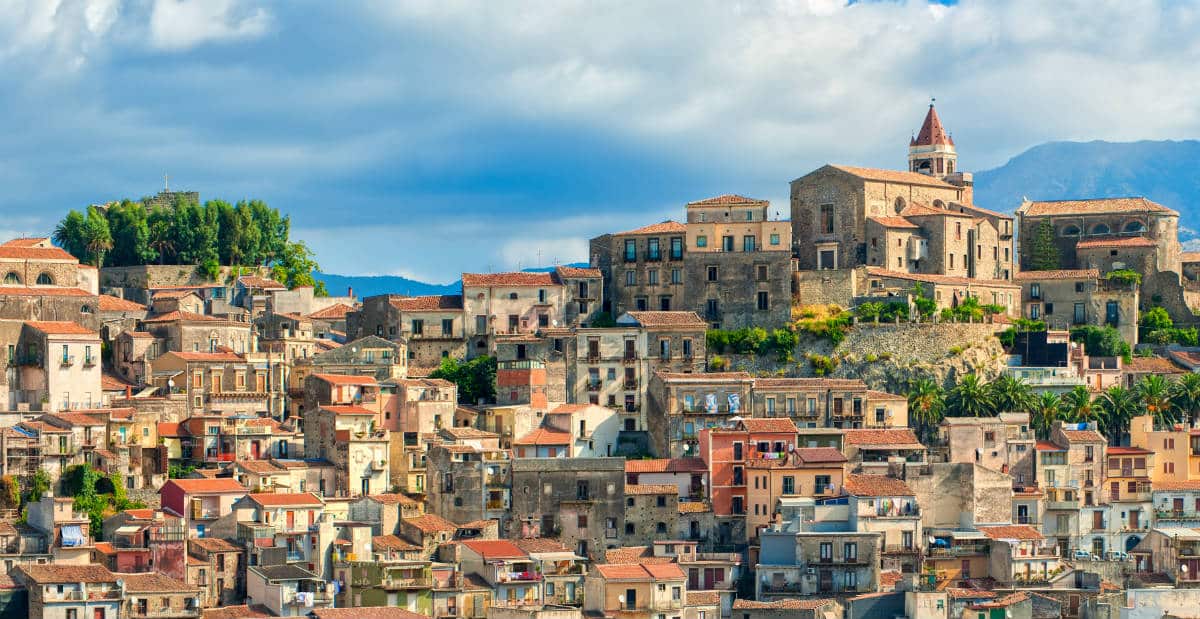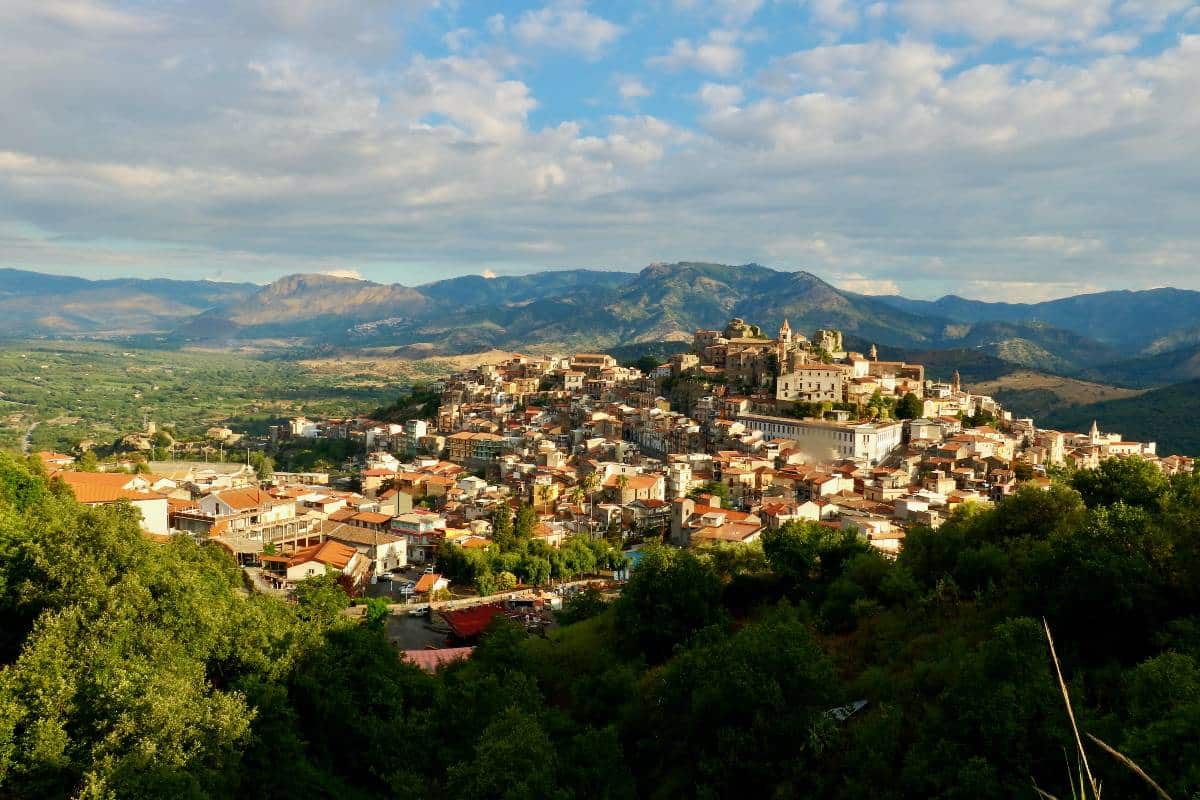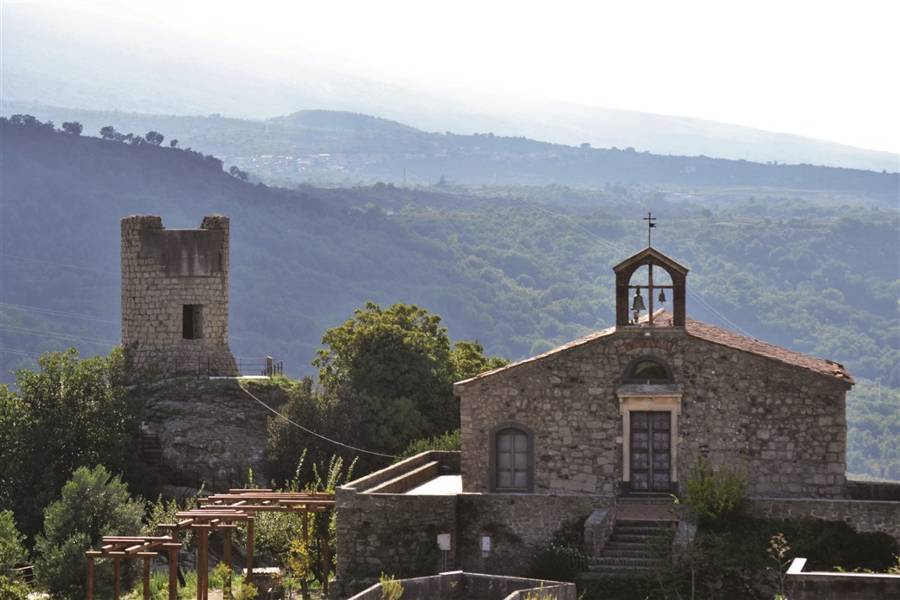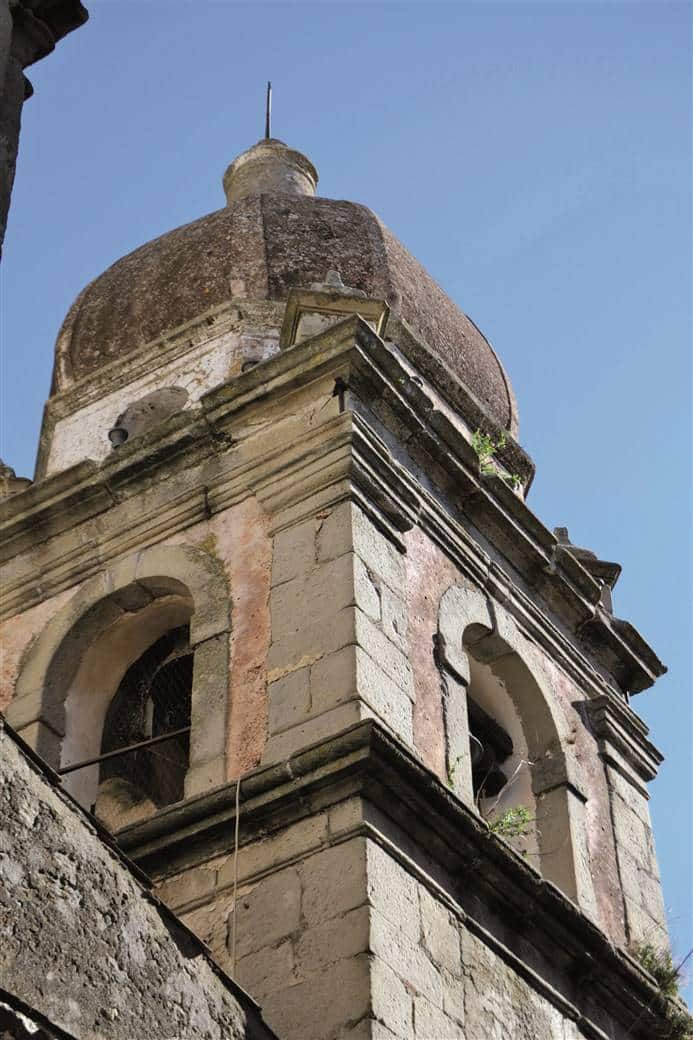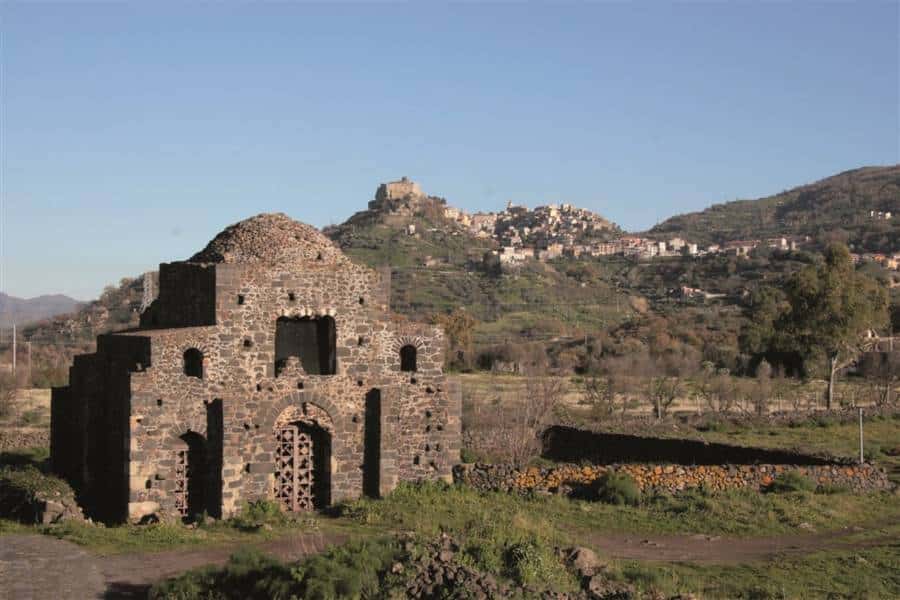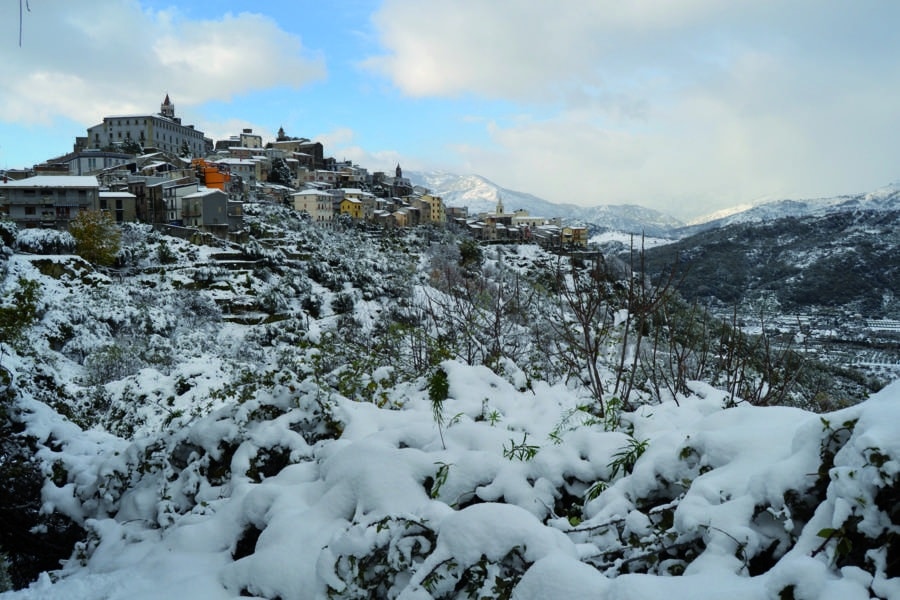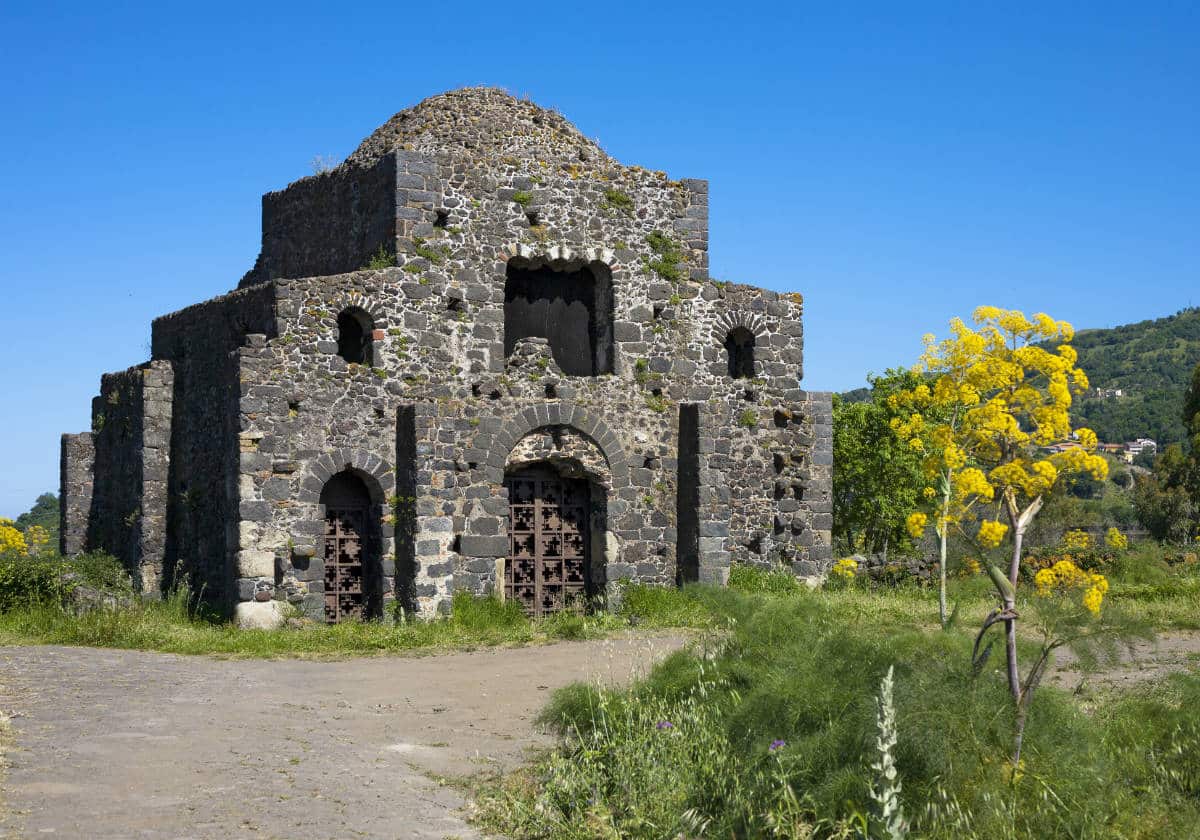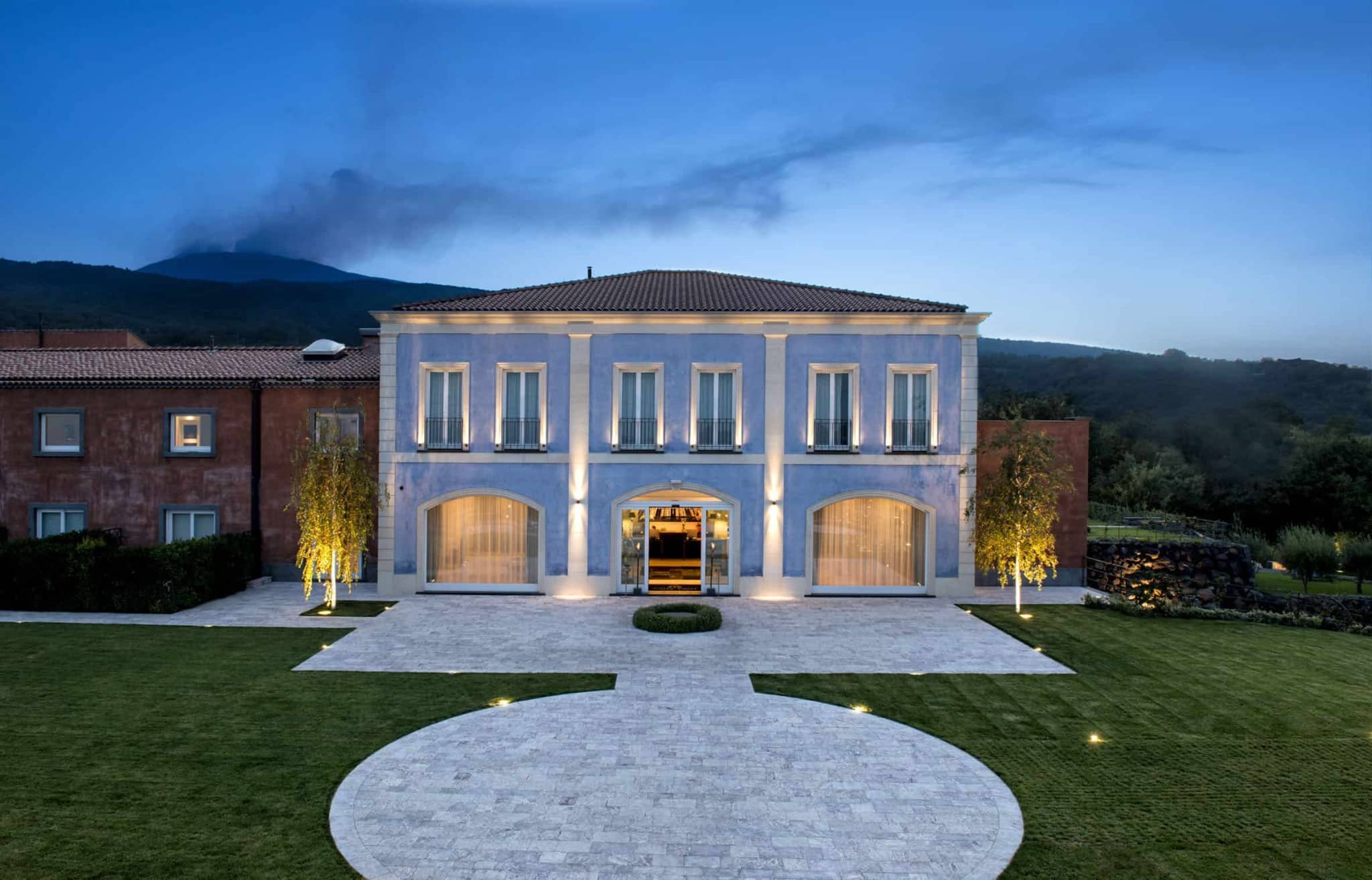Located on a hill situated on the northern slope of Mount Etna, in the midst of the valley of the river Alcantara, Castigghiuni (in Sicilian dialect) has its origins in the bronze age.
It tells that when they arrived the Greeks in Sicily (in about 750 B.C.), climbing up precisely this valley is convened in front of the village of castiglionesi: Castel Leone.
They built the fortress, dug into the rock, and today called Castello di Lauria (from the last lord who occupied the village): a point of fortified sighting to control the only way of access of the sicilian hinterland. In the thirteenth century under the Norman domination, arrived at its maximum splendour, with the construction of the walls and the Cannizzo, a watchtower placed at one end of the village, which tells it's been split in two by a lightning.
Today it is still possible to admire it in its evocative position and frame: sandstone caves under it, the village behind him. From here it dominates the entire valley of the Alcantara. In addition to the fortress and the Cannizzo, deserves a visit the church of Santa Domenica, near Castiglione, perhaps the most important Byzantine cuba present in Sicily (VII century about).
The testimony of the various cultures that ensue in the domain of the city (not only Greeks and Normans, but even the Romans, the Arabs and the Swabians) are reflected today in the local traditions, represented by numerous local festivals that animate Castiglione and the entire Alcantara Valley. As the procession of the Madonna della Catena, which is celebrated on the first sunday of May. Near the 10th of August it takes place the traditional gastronomic festival with tasting of typical products of the place, including some unique wines in the world, as the Nerello Mascalese and the Carricante.


